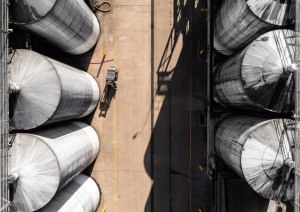A resealable can, interactive packaging, a pouch with a bubble valve seal and a coffee-making cobot were among the highlights at Pack Expo International last week in Chicago. PKN took a closer look.
Launched for the first time at PackExpo International in Chicago last week, CanReseal is the name of a new design that enables cans to be resealed using a proprietary threaded socket design. It's claimed to be the only fastener since the rivet that is made from the same material as the can end.
CanReseal cans are not to be confused with metal bottles, they are true cans in the sense that they must be broken into to be opened. According to Canovation, what sets CanReseal apart from other resealing solutions is the deeply drawn socketed end that allows it to fit existing manufacturing lines. The caps are attached to the end when supplied to the filler.
PKN spoke to inventor and chief engineer of CanReseal, Daniel Zabaleta, who shares more about the innovation in this video:
Over on the Zip-Pak stand, the company was promoting a new patented flexible valve technology for liquid pouches called Valv-Pak. The closure system allows controlled dispensing and spill-proof containment of liquids in flexible packaging. It's a discrete flexible valve that yields when pressure is applied to the product compartment, dispensing the liquid. Air then reoccupies fills the 'bubble' compartment, closing the dispensing channel.
Zip-Pak says “ the one-handed technology is perfect for customers who are on the go while the resealable and malleable packaging is simple and affordable.”
As it's leak proof and lightweight, it provides an e-commerce and eco-friendly solution. Check out the demonstration here:
Interactive packaging is coming into its own at last, and the best example that I found at Pack Expo was on the Constantia Flexibles stand, where I spoke to Thomas Schulz about the enormous potential for consumer engagement using interactive packaging.
Schulz explained that the what sets Constantia Interactive apart is its combination of digitally readable packaging material with a digital platform for data management and a smartphone app customisable to a wide range of customer needs. The big advantage here is the control over the data collected which can be provided directly to the customer as a part of the comprehensive solution.
The digital features span from purely informative, such as instructions for use, through videos and games, to contests that can be individually selected by the customer.
He gave PKN a quick demo of Constantia Flexibles interactive packaging activated by image recognition technology on a biscuit packet:
and here on a yoghurt lid:
PKN readers have heard a lot about ABB's award-winning YuMi collaborative robot, and at the last few shows I have attended I have seen it adopt different guises, like the casino dealer at Pack Expo Las Vegas last year. But this time there was cause to pause, as YuMi was dispensing a much needed coffee.
Check out its moves here:
For more news on innovation at Pack Expo Internatioal, look out for our Nov-Dec print issue of PKN.






